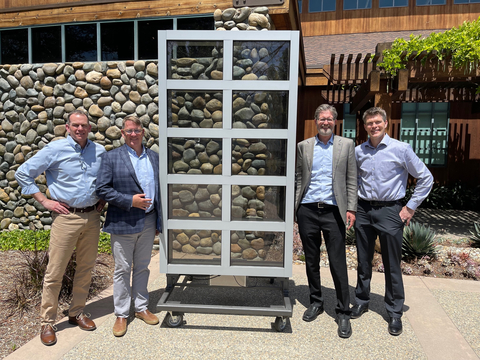Transparent PV Windows Demonstrate Energy-Efficiency Performance in NEXT Energy Building Technology Project at NREL

NEXT Energy Technologies, Inc., makers of a proprietary transparent photovoltaic (PV) coating that transforms commercial windows with uncompromised aesthetics into energy-producing solar panels, has announced results of a multi-year photovoltaic window project it has completed as part of the Wells Fargo Innovation Incubator (IN2) that shows the overall energy-efficiency performance of NEXT transparent PV windows compared to traditional commercial windows.
IN2 is a renewable technology initiative with a major focus on supporting scalable solutions to reduce the energy impact of commercial buildings. It is co-managed by the Wells Fargo Foundation and the U.S. Department of Energy’s (DOE’s) National Renewable Energy Laboratory (NREL).
Results of this project are significant given that commercial buildings account for 36% of all US electricity consumption at a cost of more than $190 billion annually. Additionally, windows represent 30% of a commercial building’s heating and cooling energy, costing US building owners about $50 billion annually, according to DOE. Combined with President Joe Biden’s new goal of the US government achieving net-zero greenhouse gas emissions by 2050, it is imperative that the commercial real estate and construction industries transform how buildings manage energy and where they get it.
“To effectively mitigate climate change, we need to fundamentally rethink how we design, construct, power, and manage our built environment,” said Daniel Emmett, CEO of NEXT Energy Technologies. “Our project data shows these windows can help buildings reduce energy consumption by improving the efficiency of windows and generating electricity for the building.”
NEXT’s transparent energy harvesting technology allows architects and building owners to turn windows and glass facades into producers of low-cost, on-site, renewable energy for buildings. The photovoltaic technology is enabled by proprietary organic semiconducting materials that are earth-abundant and low-cost. This material is coated uniformly onto glass as an ink in a high-speed, low-cost, low-energy process, enabling the glass to harvest the sun’s light and convert it into electricity rather than heat.
In the IN2 NEXT project, NEXT windows were modeled and tested against traditional commercial windows, tracking performance based on their respective Solar Heat Gain Coefficient (SHGC), an industry-standard performance metric for commercial windows. SHGC measures the amount of heat – or solar gain – created by sunlight passively entering buildings through windows. Excessive solar gain can lead to overheating within a space and inefficient energy management throughout a building.
The results of the study show that NEXT’s technology could lower the SHGC from an otherwise equal window to something below .20.
Garret Henson, the Vice President Sales & Marketing at Viracon, a leading manufacturer of architectural glass for commercial buildings in North America, said: “These are extremely significant results for the energy efficiency of insulating glass. Achieving a SHGC below .20 while providing neutral aesthetics has been a monumental challenge for all of us that create vacuum deposition architectural coated glass. Balancing performance and appearance is the heart of ideal harmony and it appears NEXT has done just that.”
The lowering of the SHGC represents a median source energy savings of approximately 10% across all locations and a maximum source energy savings of up to 50% in some locations (e.g., New Mexico, Texas, and Arizona) compared to baseline scenarios for today’s traditional windows.
“The results of the collaboration with NEXT give us data on how to redefine ways architects and building owners measure the performance of commercial windows,” said Trish Cozart, program manager of IN2 and director of the Innovation and Entrepreneurship Center at NREL. “If you can generate substantial amounts of electricity with a building’s windows, it can mark a new chapter. Now, the goal is the evaluation of SHGC to account for impacts of power generation as well as solar heat gain.”
About NEXT Energy Technologies, Inc.
NEXT Energy Technologies is a Santa Barbara, California company developing transparent energy harvesting window technology that allows architects and building owners to transform windows and glass facades into producers of low-cost, on-site, renewable energy for buildings. For more information, visit www.nextenergytech.com.
About the Wells Fargo Innovation Incubator (IN2)
The Wells Fargo Innovation Incubator (IN2) is a $50 million technology incubator and platform funded by the Wells Fargo Foundation. Co-administered by and housed at the National Renewable Energy Laboratory (NREL) in Golden, Colorado, IN2’s mission is to speed the path to market for early-stage, clean-technology entrepreneurs. Launched in 2014 with an initial focus on supporting scalable solutions to reduce the energy impact of commercial buildings, IN2 has since expanded its focus to advance technologies that address the sustainable production of agriculture and housing affordability. For more information, visit in2ecosystem.com.
Comments (0)
This post does not have any comments. Be the first to leave a comment below.
Featured Product

